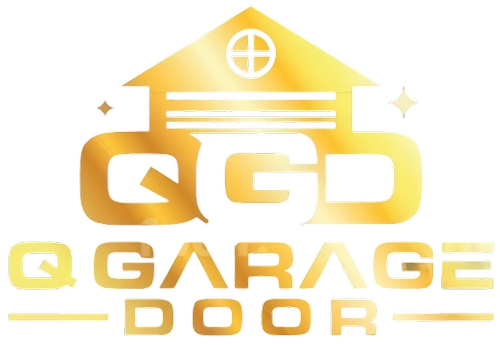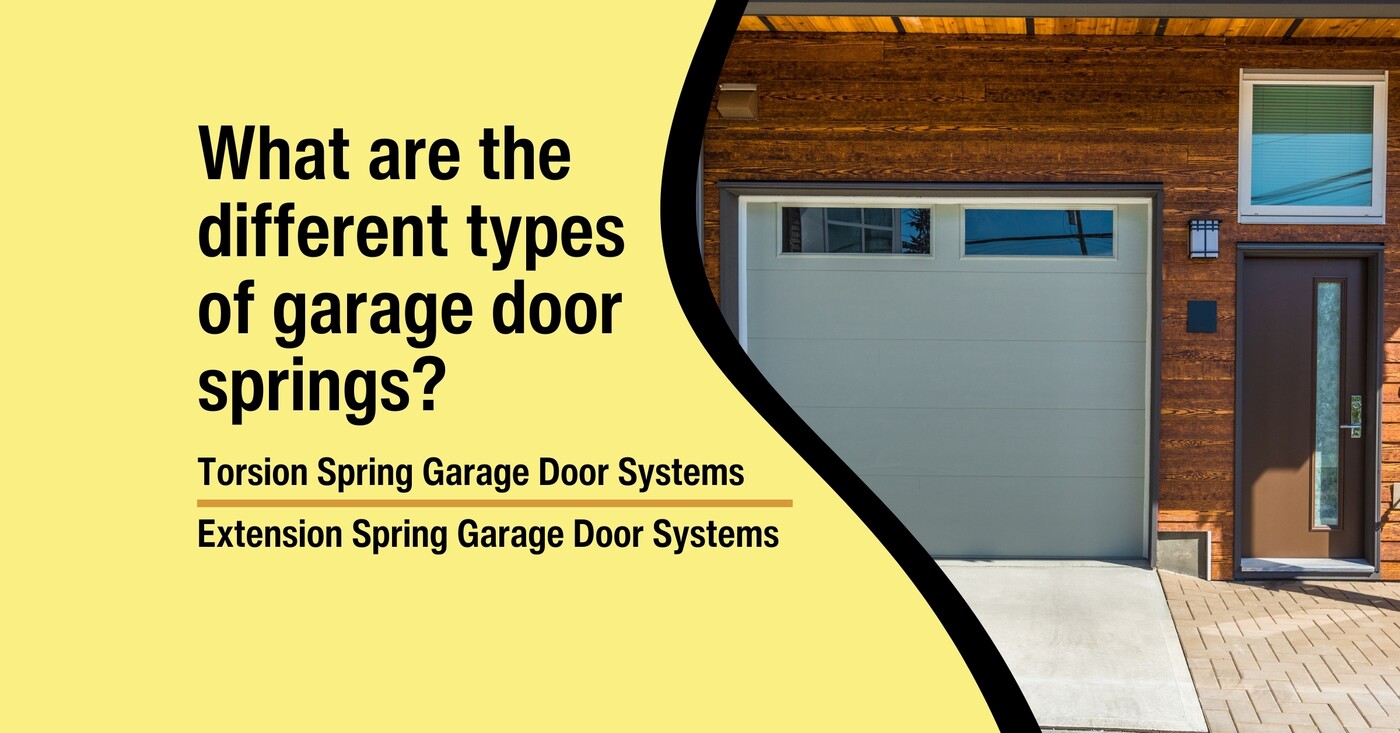Garage door springs for residential properties come in two major variants. The most common type is the torsion spring garage door spring system, which is also generally considered one of the more reliable types. The other main variant is the extension garage door spring. Garage door springs are known as counterbalance systems because they offset the garage door’s weight.
Typically, the type of garage door spring your home has is not given much thought, but rest assured, there are significant changes from extension spring to torsion spring garage door systems.

How many garage door springs do residential garage doors have?
Typically, the answer here is two garage door springs: one for the left-hand side and one for the right-hand side. Garage door springs on both sides have to be balanced to ensure smooth and natural operation of your garage door.
Sometimes, your garage door will only have one torsion spring, but two is most common. People often convert from a single torsion spring to a double torsion spring, and we recommend this service. Doubling the number of springs for use in a garage door increases the redundancy and reliability of the opener system.
Single-coil spring setups naturally put more stress on the garage door opener throughout the system’s lifecycle.
Difference Between Torsion Spring and Extension Spring Garage Doors
The extension spring garage door utilizes long springs that look similar to what you would expect a spring to look like. The springs expand and contract as the garage door closes and opens.
Extension Spring Garage Door Systems
In an extension spring garage door system, the potential energy in the spring to want to retract into its natural state helps to open the garage door with the motor/opener operation. There is one extension spring on the left-hand side and one extension spring on the right-hand side. The extension springs run parallel with the garage door track from the door to the back of the system, usually in the mid-span or back of the garage.
Typically extension garage door systems have one spring on either side of the garage door.
Torsion Spring Garage Door System Overview
A torsion spring garage door utilizes a coil spring as it is often called, installed on the torsion bar. A torsion spring, often referred to as a coil spring, plays a crucial role in the operation of a garage door, particularly in torsion spring systems. The spring is mounted on a horizontal shaft above the door and is wound under high tension. When the garage door is closed, the torsion spring stores potential energy by winding tightly. This energy is released when the door is opened.
With torsion spring systems, one spring is often centred in the middle of the door, or two separate garage door torsion springs are placed on either side of the center of the door. Springs on either sides of the door center, with two-spring systems, have different windings, and must be appropriately selected by the installer prior to installation.
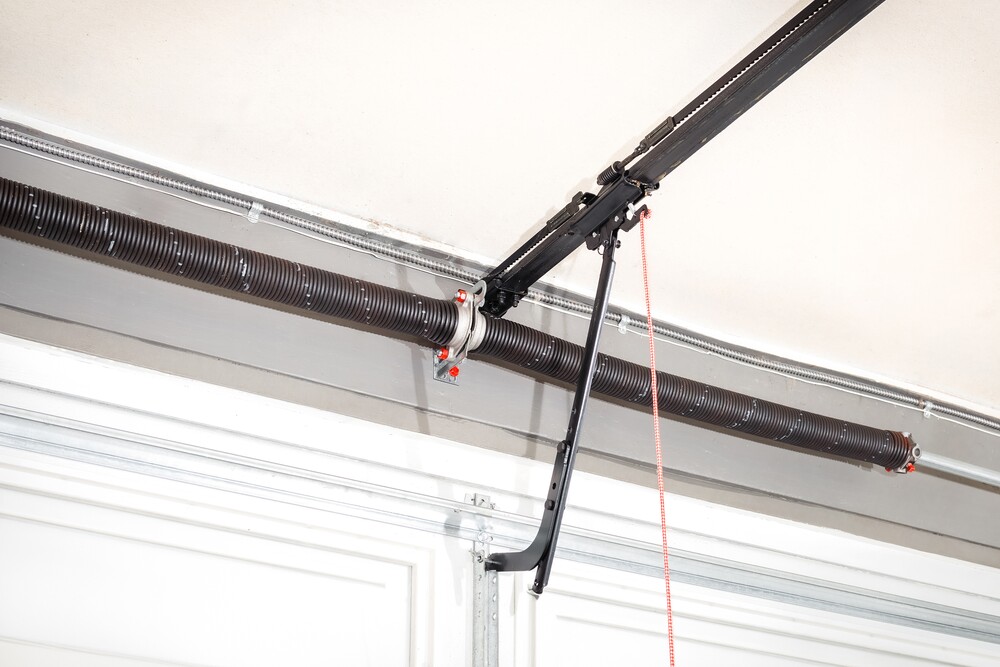
Reliability and Preference Between Torsion Springs and Extension Spring Garage Doors
In terms of reliability, a torsion spring system is generally seen as the better of the two. The torsion spring is compact, coils with the torsion shaft, and is not prone to repetitive stretching like the extension spring.
If the torsion spring breaks it is not going to spring back to it’s original location like an extension spring. Also, it is more compact than an extension spring. It can be mounted neatly above your garage door, which makes for a more tidy installation and look, and prevents additional overhead issues with any material you might want to store above your garage door tracks for instance.
‘Wind’ of Torsion Spring | Spring Winding
Left-hand wind springs and right-hand wind springs are torsion spring variants for either side of a garage door. The left-hand wind spring, so named due to the wind of the spring in manufacturing, is to be installed on the right-hand side of the garage door.
The right-hand wind spring is to be installed on the left hand side of the garage door. This is with the positioning of the installer being within the garage of course, looking at the garage door from inside the garage.
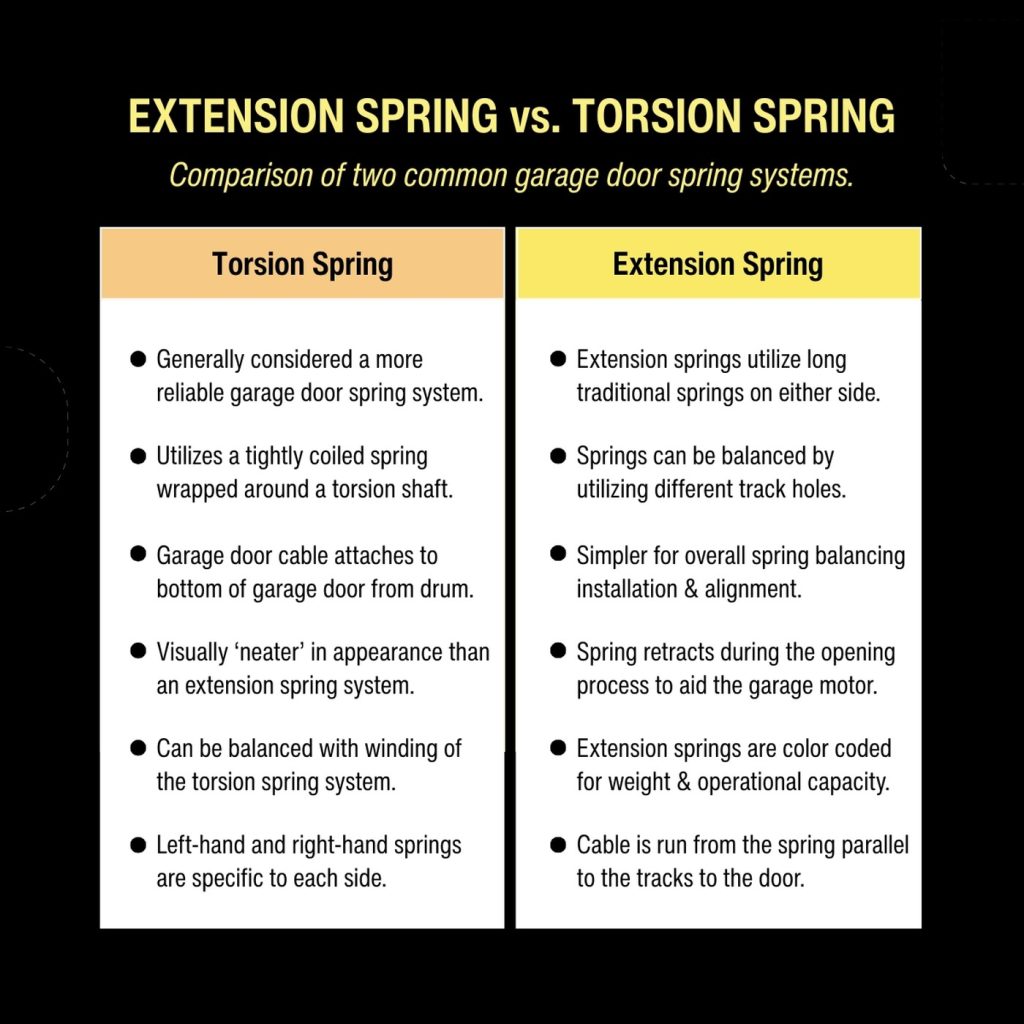
Torsion Spring Specifications
In general, when using the right torsion springs, the positioning and sizing of the springs will be equal for either side. Some basic specifications for garage door springs include for the wire size of the spring, the inside of the spring, and the spring length. Optionally, if you have a spring breakage finding these spring characteristics and matching the specifications for the replacement garage door springs is fine… but it is often best to trust the services of a professional garage door spring technician in the greater Toronto area in confirming your replacement torsion springs are sized correctly.
Torsion springs are also provided with red and black coloring on either side of the spring. The red springs are known as right-wind springs, and the black spring is the left-wound spring.
If the torsion spring has other colors, this is specific to the color signifier for the wire size or wire gauge, typically known as the DASMA color.
Different colors signify the sizing for a torsion spring, applicable for various weights and sizes of garage doors.
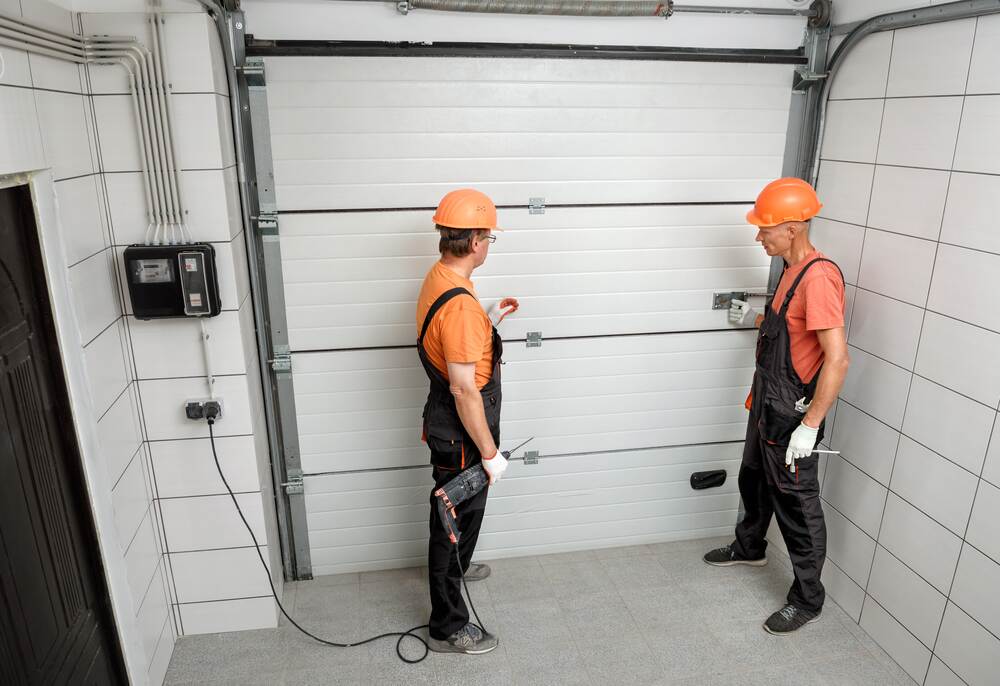
Garage door such as above utilize a single coil spring centred above the garage door. For smaller, lighter weight garage doors like this single garage door, one torsion spring may be suitable.
When is a torsion spring broken?
Most garage door spring (tension) systems are good for about 10,000 cycles. Typically you will not see both springs break on a garage door system. Instead, you will find one garage door spring break, and in general, that means you should probably replace both. Having both replaced will ensure that the lifecycle of the spring products is equal on both sides. Wire size is the size of the coil metal in the spring.
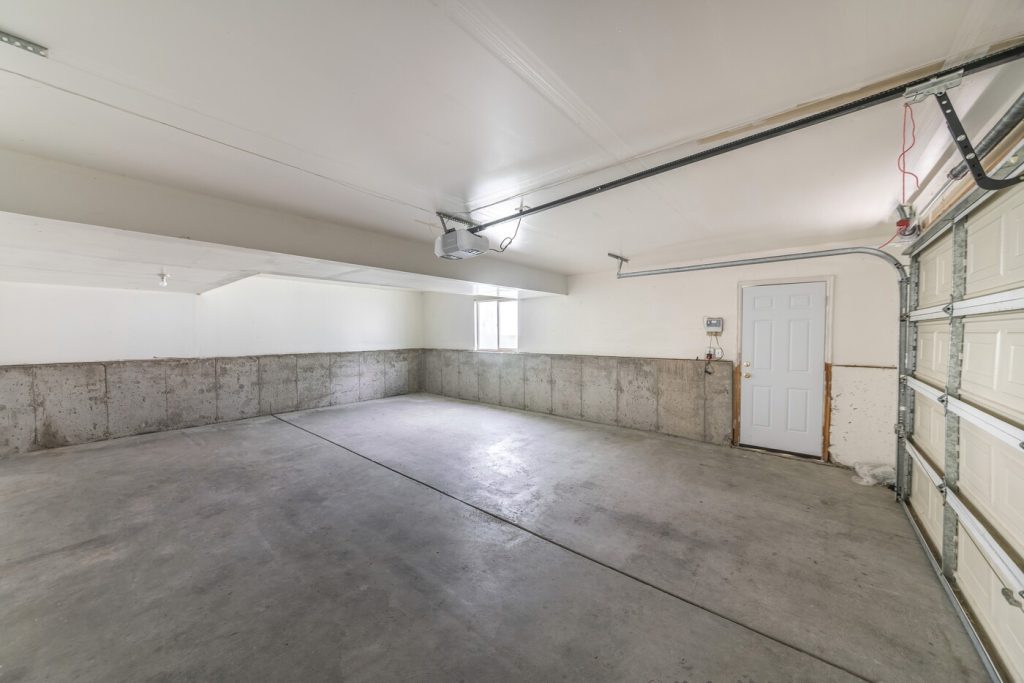
Extension Springs
Extension springs are less dangerous to work with than torsion garage door springs. There is no coil spring under tremendous wind and high potential energy. When extension springs break, generally, it is the loop at the end that breaks. Technically, though, in the extension spring system, the lifting force counterbalance system is provided by stretching the spring and the cable as such, so even so, there is still danger with extension spring/cable breakage.
Extension springs have different variations. The ends of springs are generally spray painted a color for different weight classes. There are various types of garage door extension springs, too, such as double looped ends, open looped ends, and clipped ends.
All of these variants of extension springs can be color-coated for various weight classes.
It is important to note that extension spring color classes come in several different tiers, so a light blue extension spring could have a couple of different meanings. It takes the right understanding of garage doors to identify the weight class to which the garage door extension spring is designed.
Knowing the garage door’s weight and height is essential, as is choosing the right extension spring. But unlike the torsion springs, there is no manual adjustment, but rather proper installation of the spring, at the correct extension/track hole locations. Adjusting the hook location for extension springs brings about the ability for the installer to properly balance an extension garage door system.
Conclusion
Balancing, selection, and installation of garage door springs, whether torsion springs or extension springs, are a bit different, coinciding with the different functionality of either spring. For instance, torsion spring garage door balancing is a manual process done by a trained garage door service technician.
Ensuring proper coil torsion spring selection and utilization requires balancing the right product and the right installation techniques.
With extension garage door springs, the correct product and balanced garage door operation come down to the correct product selection criteria, in regard to the weight and height of the door. There are also hook selection holes for an extension spring system, but generally this does not require specialized tools.
But this is just as critical for torsion springs, where selecting the right size spring is dependent on the weight of the door, too. However, it requires added technical expertise to properly balance, align, and install safely!
For all your greater Toronto area garage door spring repair services, call on the team from Q Garage Door Service. They are available 24/7, being on-call around the clock, our team is professional and reliable, always available for professional service.
